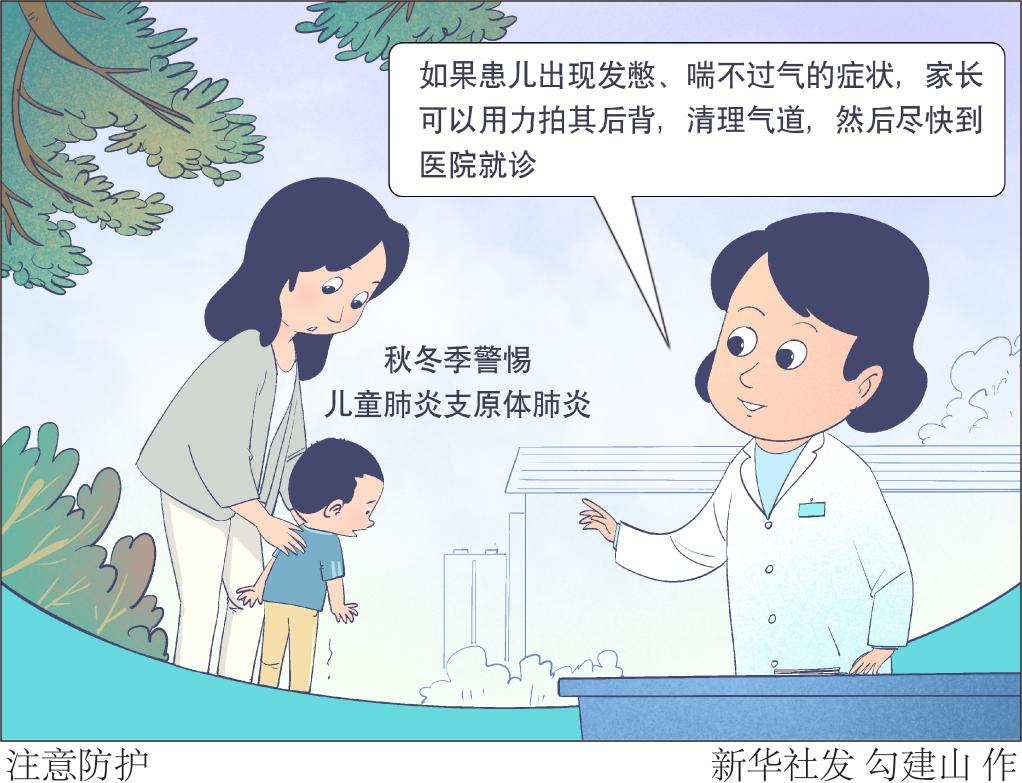Five Questions and Five Answers about Mycoplasma Pneumoniae Infection in Children
Recently, mycoplasma pneumoniae is prevalent in some areas, and the number of cases of mycoplasma pneumoniae infection in children in some hospitals has increased. What is mycoplasma pneumoniae infection? What symptoms should be vigilant? How to do a good job of prevention and control? In view of the hot spots of social concern, the reporter interviewed Xu Baoping, director of the Department of Respiratory Medicine of Beijing Children’s Hospital affiliated to Capital Medical University, Zhao Shunying, director of the Department of Respiratory Medicine of Beijing Children’s Hospital affiliated to Capital Medical University, and Zhang Haidi, a pediatrician of the First Affiliated Hospital of Guangzhou Medical University.
Q: What is mycoplasma pneumoniae infection?
A: Mycoplasma pneumoniae is a pathogenic microorganism between bacteria and viruses, with a diameter of 2 microns to 5 microns. It is a prokaryotic pathogenic microorganism and lacks cell walls. Mycoplasma pneumoniae is mainly transmitted by droplets and direct contact, and the incubation period is 1 to 3 weeks.
Mycoplasma pneumoniae infection often occurs in any season, and it is prevalent in autumn and winter in the north, but in summer and autumn in the south. It occurs periodically every 3 to 7 years, and the epidemic time can be as long as 1 year. Mycoplasma pneumoniae infection is a common respiratory infectious disease in children in China, which is more common in children aged 5 and above, but children under 5 can also get sick.

Q: What are the manifestations of mycoplasma pneumoniae infection? What symptoms should be vigilant?
A: The clinical manifestations of children with mycoplasma pneumoniae infection are quite different: mild patients may not get sick, or only show upper respiratory tract infection; Severe cases can cause pneumonia, lung consolidation, pleural effusion and so on.
The main clinical manifestations of the disease are fever and cough, which may be accompanied by headache, runny nose, sore throat, earache, etc. Persistent high fever suggests that the condition may be serious. Some children have wheezing, especially infants.
Parents should take their children to see a doctor as soon as possible if they find that they have a severe cough and high fever. If the child has symptoms of choking and breathlessness, parents can pat his back hard, clean the airway and then go to the hospital as soon as possible.
Q: The symptoms of mycoplasma pneumoniae infection are easily confused with influenza and other diseases. How to distinguish them?
A: There are many methods to diagnose mycoplasma pneumoniae infection, such as serum antibody detection and nucleic acid detection. Whether it is mycoplasma pneumonia or not requires a doctor to comprehensively judge according to the child’s medical history, symptoms and signs, combined with relevant routine laboratory tests.
In addition to combining clinical and imaging manifestations, etiology and serological examination, parents can also observe the cough of their children. Mycoplasma pneumoniae infection usually has paroxysmal and serial coughs, with dry cough in the early stage and severe cough, which even affects eating and sleeping.
Q: How to prevent it?
A: Mycoplasma pneumoniae is inherently resistant to antimicrobial agents (such as penicillin and cephalosporins) acting on cell walls. At present, the first-line drugs are mainly macrolide antibiotics, and the commonly used drugs include azithromycin, erythromycin and clarithromycin. Children with macrolide resistance may need to use other antibiotics.
Antibiotics are prescription drugs and must be used under the guidance of a doctor. Children with refractory mycoplasma infection and severe mycoplasma infection need comprehensive treatment, such as glucocorticoid and bronchoscopy intervention. In February this year, the National Health and Wellness Commission issued the Guidelines for Diagnosis and Treatment of Mycoplasma Pneumonia in Children (2023 Edition), aiming at further improving the standardized level of diagnosis and treatment. The key is to identify and see a doctor in time, and the best treatment window period is within 5 days to 10 days after fever.
To prevent mycoplasma pneumoniae infection, we should develop good personal hygiene habits, such as keeping social distance, hand hygiene, frequent ventilation, etc., and wear masks when necessary. Indoor ventilation in autumn and winter should also pay attention to keep warm.
Q: Will mycoplasma pneumonia cause "white lung"?
A: This kind of pneumonia may bring mucus plugs to block the bronchi, which may lead to "atelectasis", that is, the decrease of lung gas content, resulting in "white lung" in imaging. But this is two concepts with the "white lung" of diffuse lesions in both lungs.
By tapping the back to expel phlegm, eliminating phlegm with drugs, bronchoscopy and other means, the child can be cured in a short time, and basically will not cause life-threatening. Most children with mycoplasma pneumoniae infection have a good prognosis. Children with severe and refractory mycoplasma pneumoniae infection may leave lung structure or function damage, which requires long-term follow-up. (Reporter Dong Ruifeng, Gu Tiancheng)
